BUS106 Marketing Principles: Zara's 4P's Analysis - Slide Deck
VerifiedAdded on 2023/04/24
|7
|496
|213
Presentation
AI Summary
This marketing analysis examines Zara's product strategy, focusing on clothing as a consumer necessity with original designs and a strong brand. It applies the product life cycle model, noting Zara jeans' maturity stage. The analysis covers Zara's high-price strategy for high profit margins, driven by real fabric use, and suggests targeting diverse income segments. Distribution involves small stores and 2000 stores in 77 countries. Promotion includes retail via Zara.com, social media, and both traditional and modern advertising techniques. The analysis references academic sources to support its findings.
1 out of 7

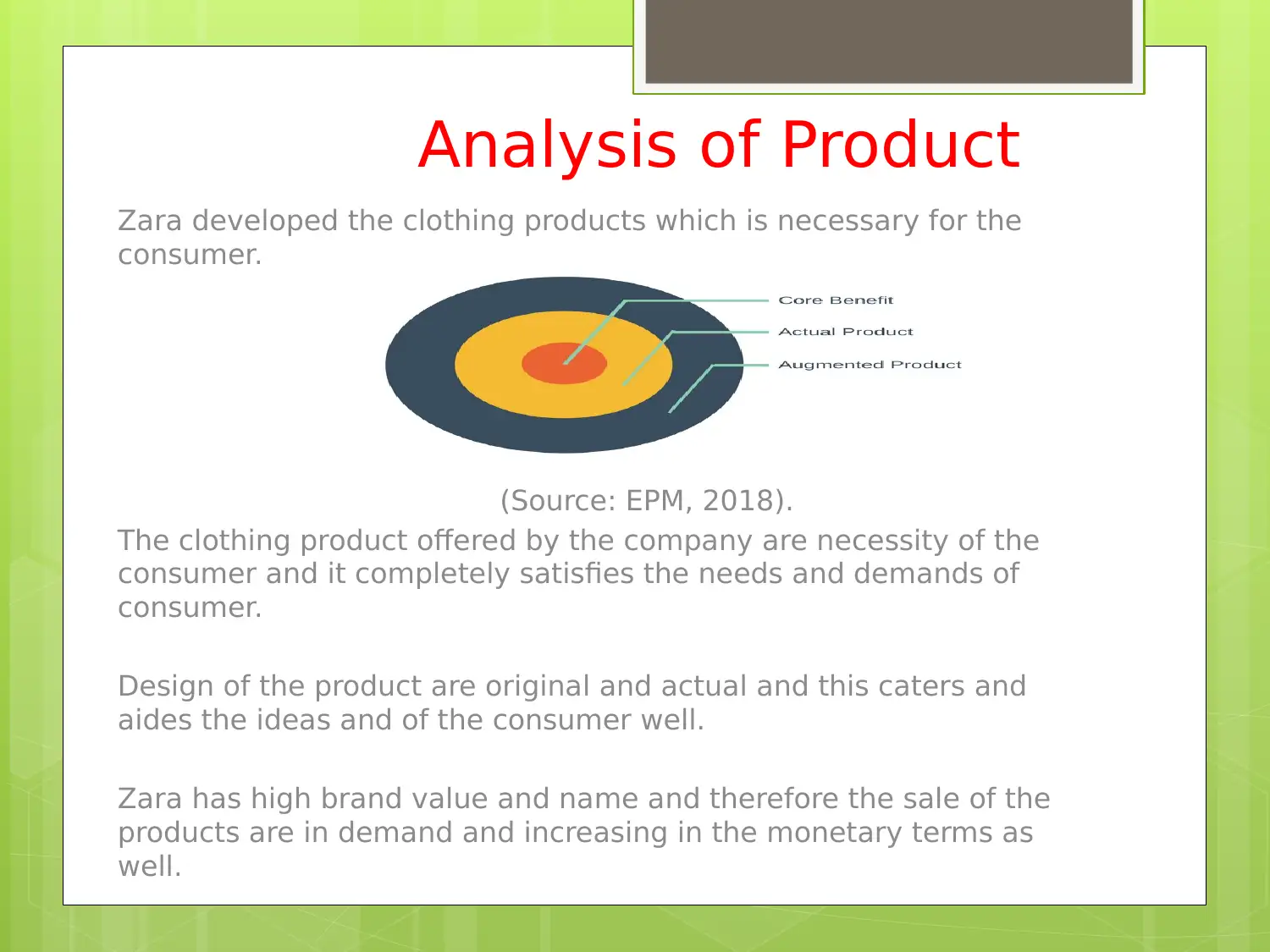
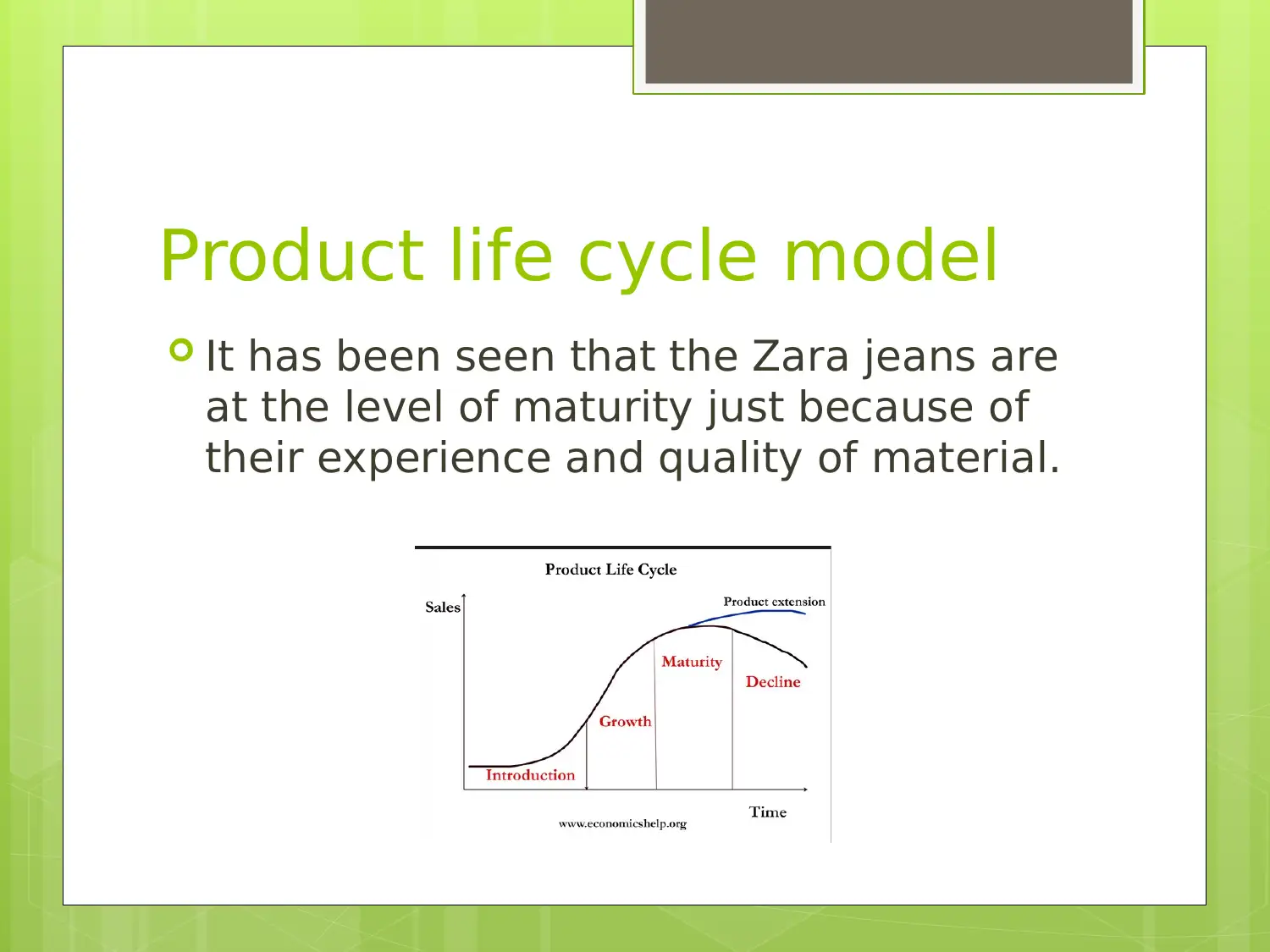

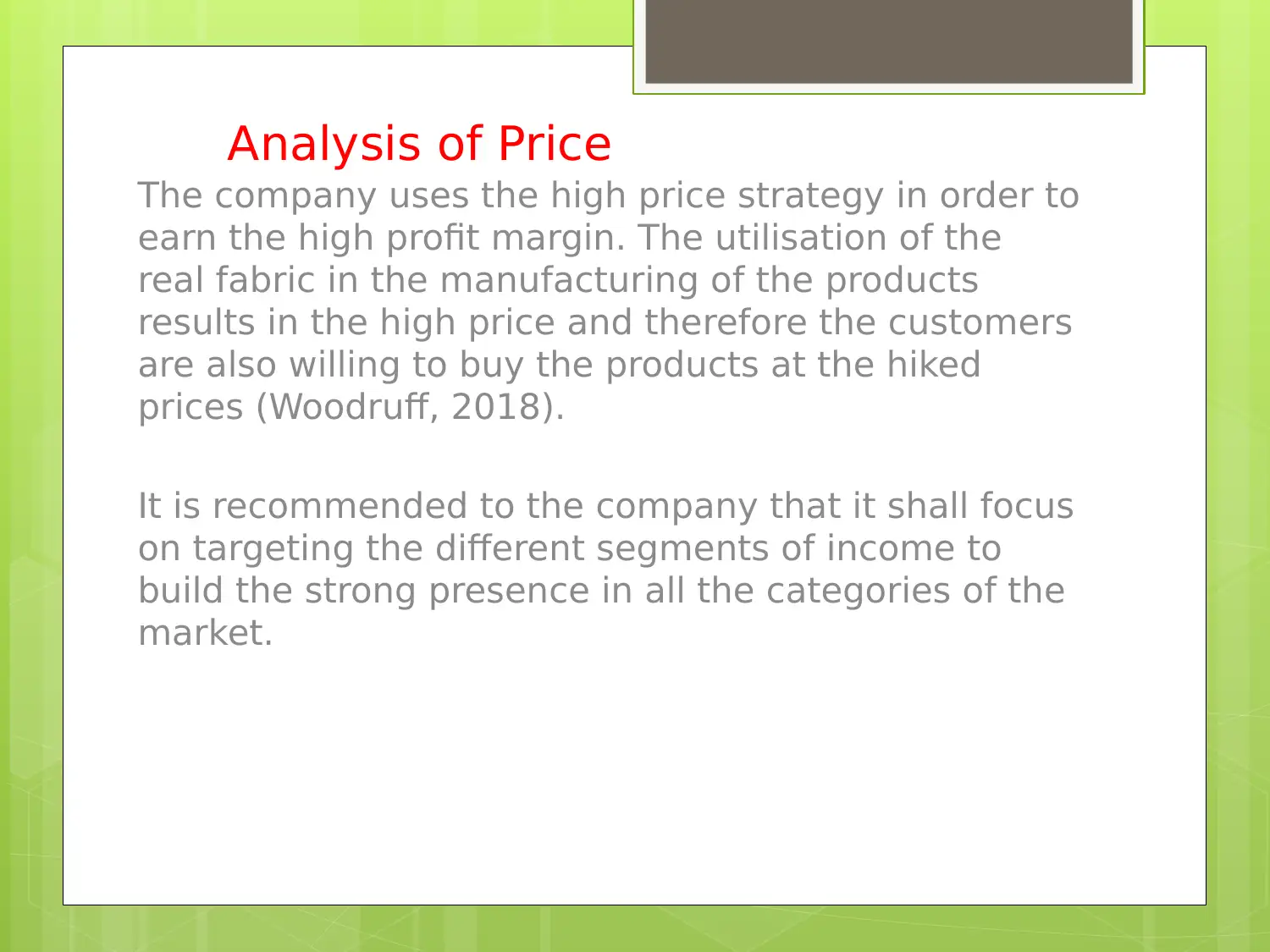
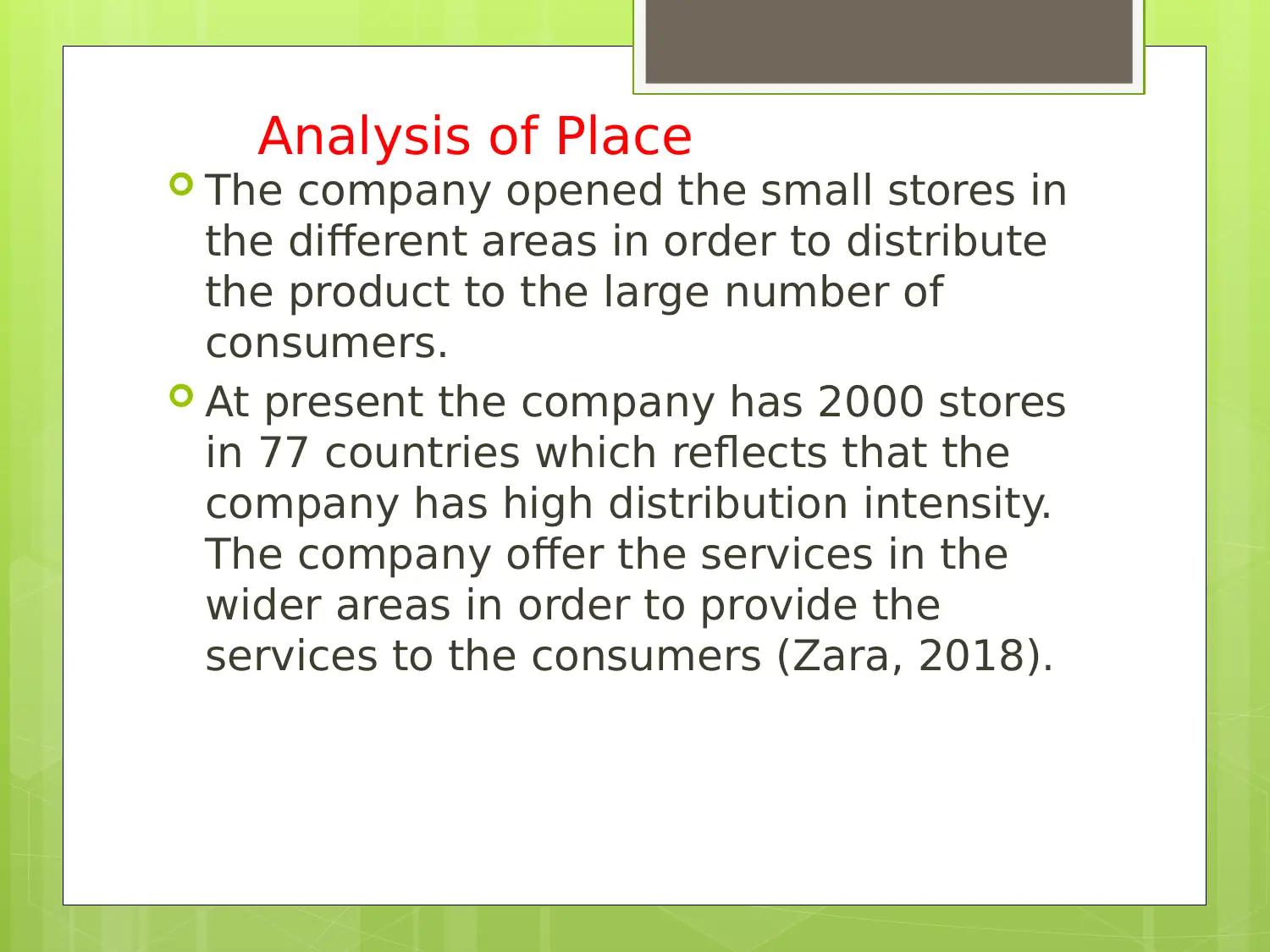
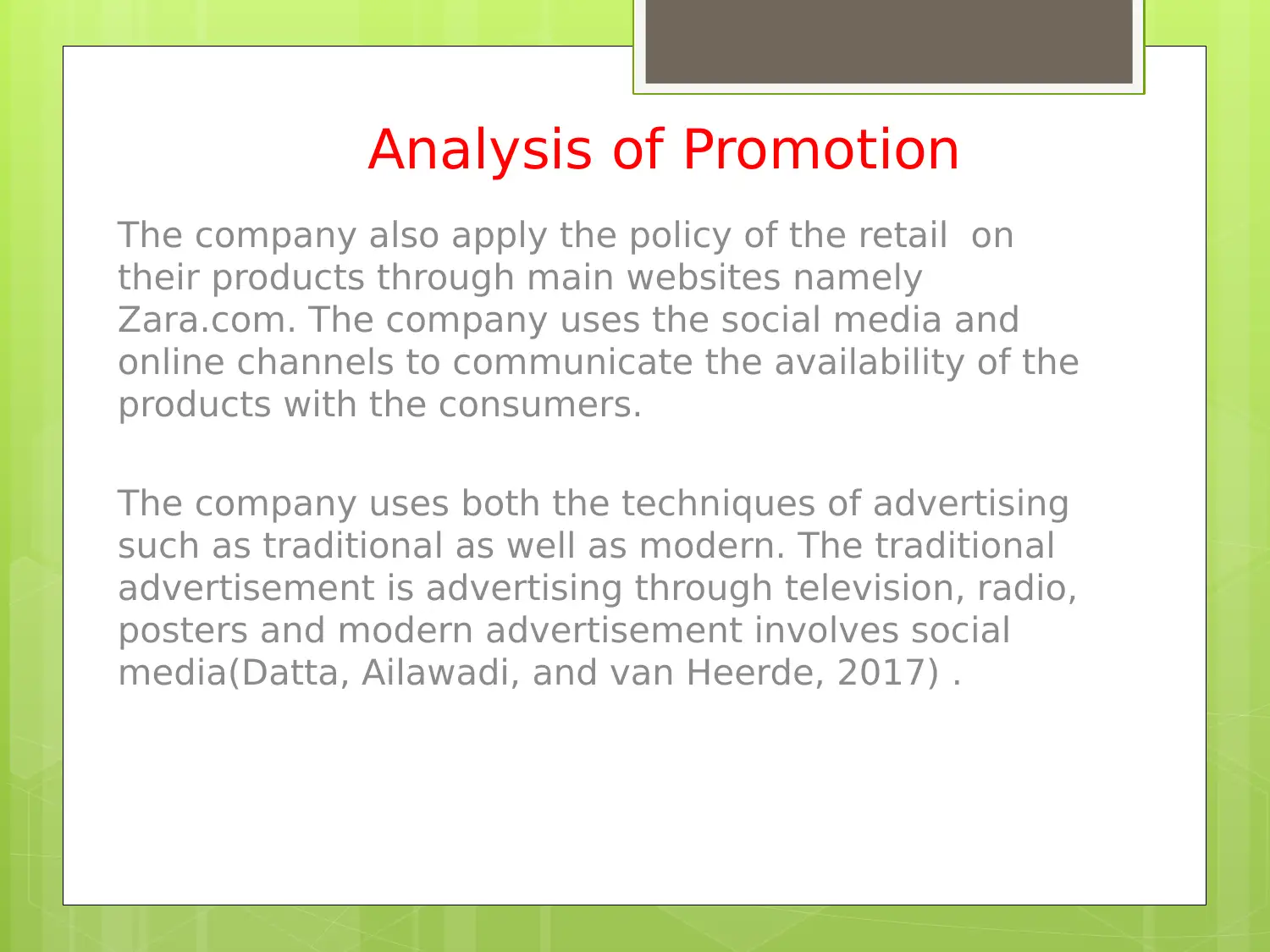
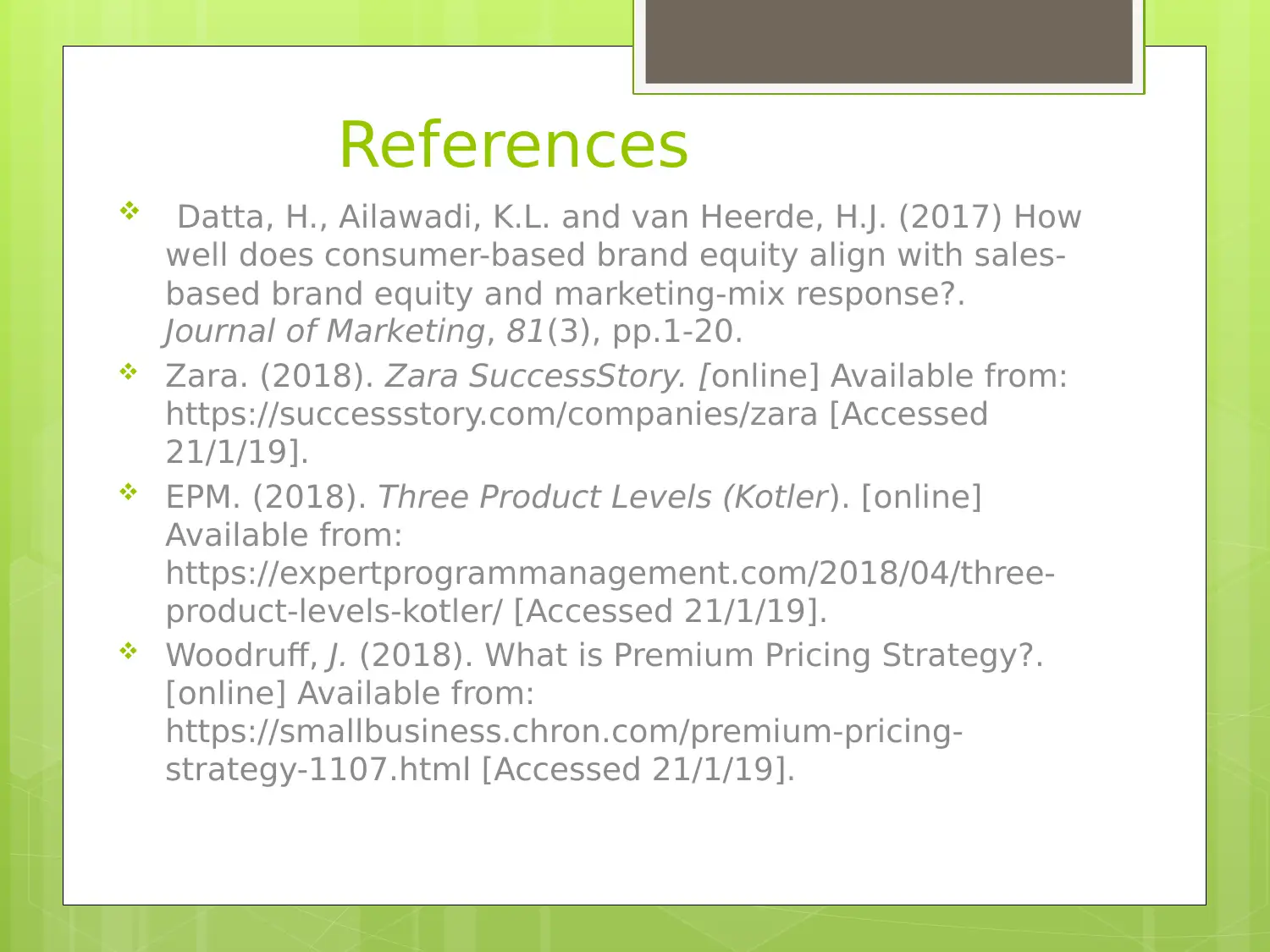





![[object Object]](/_next/static/media/star-bottom.7253800d.svg)